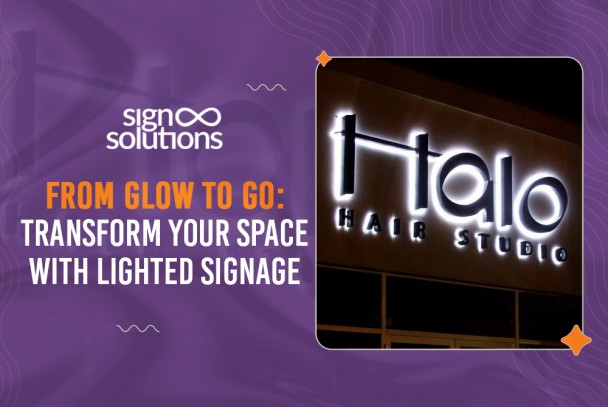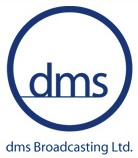Sign Solutions has been our "Go-To" source for all of our Corporate sign, banner and vehicle branding needs for years. Their team is always extremely responsive and their product quality is exceptional for the price. We highly recommend the services of the Sign Solutions!
How Important Are Font Type, Color And Size In A Sign?
Introduction to the Importance of Fonts in Creating Signage
Creating effective signage requires every marketer to consider a few factors that convert to effective sign design. Primarily, fonts play a pivotal role in shaping your message. It all counts towards selecting the right font type to generate that mesmerizing effect on the reader. Using the choicest fonts will either deliver the most awesome message for your storefront, a billboard, or directional signage or compromise its ability to communicate an impactful message. Either way, fonts go beyond being just a design element. They are a critical tool ensuring visibility, readability, and emotional connection with your audience.
As a business owner, you would acknowledge the importance of fonts in signage only when they are able to attract the viewer's attention, convey meaning at a glance, and guide them into taking the right action. Hence, using the right font type, paired with thoughtful color and size choices, will ensure a cohesive visual experience that enhances the message appeal backed by the apt proportion of clarity. For example, bold and sans-serif fonts may evoke a sense of modernity and urgency, while script fonts often communicate elegance and sophistication.
By now, you should be eager to learn how focusing on font type, color, and size can create signs that are visually engaging, easy to read, and leave a lasting impression on your audience. So grab your cup of coffee while we discuss the details.
Related Blog: Choosing the Right Font: Typography Tips for Effective 3D Lettering
Why Font Type Matters in Signage
The type of font used in a sign goes further than just being a style statement. Fonts are impactful as they set the tone of your message, which determines how the audience perceives it. After a detailed analysis, the selection of appropriate fonts counts towards font psychology in design. The choice of the right fonts based on the analysis plays a key role in this process. Different font styles evoke distinct emotions and reactions.
Let's understand it with an example:
Bold sans-serif fonts like Helvetica or Arial are considered readable fonts for signage. These fonts are perfect for yard signs or high-traffic areas needing clarity. On the other hand, serif fonts such as Times New Roman offer a professional touch. People love reading corporate promotions or formal messages when presented in this font. Irrespective of your choice, the font type must align with the message's context to create a cohesive and appealing design.
Choosing the best fonts for signs is both an art and a science, as it involves balancing aesthetics with functionality. A playful script font may work for a boutique, gym, or creative event. Still, it could undermine the professionalism of a law firm or financial institution. You may use the font of your choice, but always remember that readability has to be paramount. Another important aspect to consider is the viewing distance and angle because signs are often viewed from a distance or in motion. Overly decorative or intricate fonts can compromise clarity, causing the viewers to lose interest in your content.
More than readability, font styles tend to have psychological effects on viewers. While rounded fonts convey friendliness and approachability, sharp, geometric fonts suggest precision and efficiency. Understanding these nuances helps ensure that the chosen font not only looks great but also resonates with the intended audience and delivers the message effectively.
The Role of Font Color in Sign Design
The color of the font is crucial in sign design, significantly affecting how effectively a message grabs attention and communicates its intent. Sign font color tips highlight the necessity of selecting colors that not only attract attention but also improve readability. Bright, high-contrast combinations, like white on black or yellow on blue, are optimal for signs, as they ensure maximum visibility, even over long distances.
Font color is one of the most vital elements in sign design, directly influencing how well a message captures attention and conveys its purpose. Sign font color tips emphasize the importance of choosing colors that not only stand out but also enhance readability. Bright, high-contrast font colors, such as white on black or yellow on blue, are among the best color combinations for signs because they maximize visibility, even from a distance.
On the other hand, low-contrast colors, such as light gray on white, can make the text harder to read, especially in outdoor or low-light settings. The right color choice draws the viewer's eye to the sign while ensuring that the message is clear and easy to understand.
When selecting colors, it's essential to consider both the background and the surrounding lighting conditions. Complementary colors, such as red and green or blue and orange, create strong visual contrast, making the text pop against the backdrop. The impact of color on signage also extends to how it influences mood and perception. Soothing tones like blue and green work well for signs in healthcare or wellness spaces, while bold, striking colors like red or yellow grab attention for urgent messages or promotions.
Keep lighting in mind, too—what looks vibrant in daylight might fade or glare under artificial lights. By aligning font colors with the message, environment, and audience, you can create signs that are visually appealing and highly effective.
How Font Size Influences Visibility
For example, a good rule of thumb is to use one inch of letter height for every ten feet of viewing distance. This ensures that the text remains readable without requiring excessive effort from the viewer. Choosing the right font size not only improves clarity but also boosts the chances of the sign attracting attention and effectively conveying its message.
Balancing font size with the overall dimensions of the sign, graphic elements, and height placement is equally important. Overly large fonts can overwhelm the design, while fonts that are too small may become lost among visuals or decorative elements. Sign visibility factors also include its height and the angle from which it is viewed. For instance, signs positioned at eye level require careful consideration of font size, unlike those elevated above a building or along a roadside. When determining the effective font size for advertising, it's crucial to take into account the sign's purpose and location.
Bold and oversized fonts can draw attention in high-impact signage, such as promotional displays. Conversely, directional signs should prioritize simplicity and readability to guide viewers effortlessly. Practical planning ensures that your sign is both functional and visually appealing.
Integrating all Three Font Elements for Maximum Impact
The art of crafting impactful signage lies in the seamless combination of font type, color, and size. Effective font integration ensures that these three elements work together harmoniously to convey the intended message clearly and attractively. For example, pairing a bold sans-serif font with high-contrast colors, such as white text on a dark blue background, along with appropriately large font size, achieves a clean and professional appearance.
An elegant serif font in soft gold against a muted black background exudes sophistication for a luxury brand. By aligning font choices with the message and audience, you can create signs that are not only readable but also visually compelling.
Achieving cohesive sign designs requires balancing these elements. Overly decorative fonts or clashing colors can compromise clarity, while inappropriate font sizes might render the text unreadable from the intended viewing distance. Signage readability tips suggest using simple font types with strong contrast and scaling font size relative to the sign's dimensions and purpose.
For instance, a directional sign at an airport or a train station may use a large sans-serif font in black on a white background for optimal visibility. Meanwhile, a boutique window display might choose a smaller script font combined with warm, inviting colors to exude charm and a premium look. The key is to prioritize clarity without compromising aesthetic appeal, ensuring that the sign effectively engages its audience.
Common Mistakes to Avoid in Signage Fonts
When designing signs, you might face certain pitfalls that may reduce the expected impact and compromise readability. One of the most frequent sign font mistakes that businesses make is overusing decorative or heavily intricate fonts. While these may appear appealing, they do not suffice for the real purpose, making it difficult to read when viewed from a distance or in poor lighting conditions.
Another common mistake is selecting poor color contrasts, such as pastel text on a light background or dark fonts on a dark backdrop, which can make the message hard to read. Always remember to have a mix and match of contrasting fonts and their backgrounds so that the readability is not hampered or compromised. You must ensure the font-size proportion, keeping the viewing angle and distance in mind. Hence, don’t use fonts that are too small or inadequately sized. They will harm the sign’s core purpose and will render vital information invisible to viewers. Your signs are intended to be seen from a distance, which is the most important criterion to consider.
To avoid common signage errors, prioritize simplicity and clarity in your designs. Use one or two complementary fonts—like pairing a bold sans-serif font for headlines with a lighter font for subtext—and ensure high contrast between the text and background colors. For example, black text on a white or yellow background provides excellent visibility, especially outdoors. Professional sign design tips also include appropriately scaling font size according to the sign’s purpose and placement, ensuring legibility from the intended viewing distance.
Heavily cluttered textual information will never fulfill your brand’s interest. Hence, avoid cluttering the space with excessive text. Switch to a concise messaging format that makes reading at a glance easy and pleasurable. Avoiding these mistakes will enable you to create signs that are not only professional but also attention-grabbing and highly effective.
SignSolutions: Your Trusted Signage Partner
At SignSolutions, we specialize in providing professional signage solutions in Cayman that blend creativity, functionality, and quality. With a reputation for excellence and innovation, we take pride in being the preferred provider of custom signage in Cayman. We offer tailored designs that cater to the unique needs of both businesses and individuals.
From striking storefront signs to effective event banners and directional signage, we ensure every project embodies our client’s vision while upholding the highest standards of craftsmanship.
What distinguishes SignSolutions is our expertise in trusted sign design services aimed at maximizing message delivery. We recognize the importance of selecting the right fonts, colors, and sizes to create effective, visually appealing signage. Whether it’s a sleek, modern design for corporate promotions or a vibrant, eye-catching banner for local events, our team collaborates closely with clients to develop solutions that stand out and communicate effectively.
With SignSolutions, you’re not just investing in a sign—you’re joining a team committed to making your message impactful and unforgettable.
Conclusion: Making Fonts Work for Your Signage
Fonts are essential to effective signage. They grab attention, ensure readability, and convey messages powerfully. The right mix of font type, color, and size can elevate a simple sign into a powerful communication tool.
By prioritizing these key elements of sign design, you can enhance visibility and create a lasting impression on your audience. Whether you're designing effective advertising signs or functional wayfinding signage, thoughtful font choices are essential to achieving success.
To enhance your signage, consider these signage font tips: choose fonts that align with your brand and message, ensure high color contrast for clarity, and adjust font sizes based on viewing distance and placement. Avoid cluttering the design—focus on simplicity and clear messaging for maximum impact.
By paying close attention to these details in your next project, you can create signs that are not only visually appealing but also communicate effectively. Remember, exceptional signage starts with smart font choices, so let these principles lead you toward designs that genuinely stand out.
Recent Blog

Top Reasons to Add Window or Glass Graphics to Your Office
No, your office windows are more than your basic perception. They are the most underutilized real estate resource in your business. Opening them only ...
Read More
From Glow to Go: Transform Your Space with Lighted Signage
Suppose you own a retail outlet where customers flock to buy their favorites based on the trends that change overnight. Even if the trends change, aes...
Read More
How To Use Yard Signs to Grow Your Home Services Business
It is a warm, beautiful morning and a fresh beginning for your daily routine. You take your dog for a walk soon after sunrise. While walking past your...
Read More
Make It Wall-Worthy: Your Ultimate Guide to Large Format Printing
Technology has played a key role in making content available everywhere. Content has influenced our lives to a great extent.
Read More
Why Businesses in Cayman Trust SignSolutions for Perfect Signage?
With immense competition all around and technology spanning its arms in every direction, capturing a customer’s attention has become challenging for...
Read More









